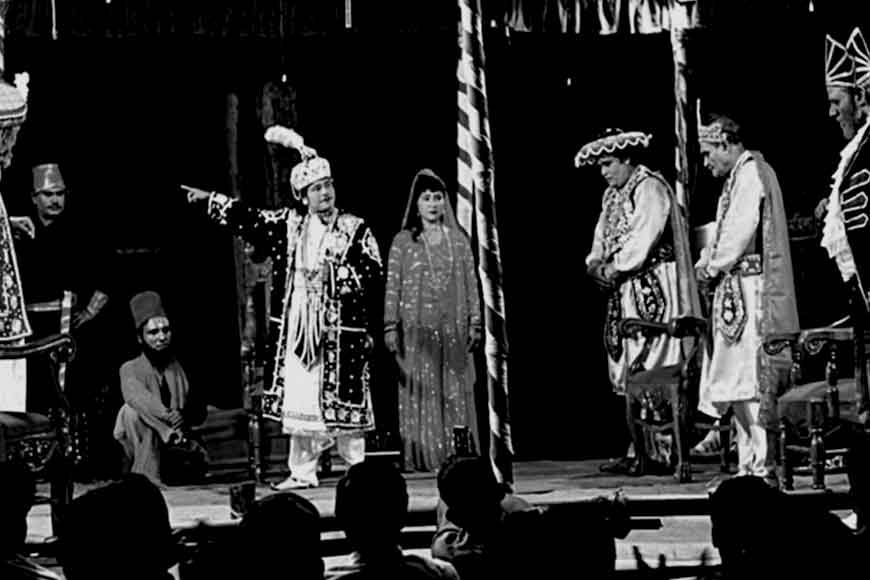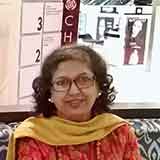Journey of Bengal's Jatra, a quintessential part of Bengal's culture

Originating from ceremonial functions, jatra, an integral part of Bengal’s cultural revolution quickly became a procession in praise of chosen deities that the rural folk worshipped. All along the journey, a medley of music and dances were addedthat evolved as a form of entertainment communicating religious values to the masses around, as the group moved from one place to another. It didn’t take long for all this to develop into a form of Bengali folk drama resembling the Tamasha of Maharashtra, the Nautanki in Uttar Pradesh or the Bhavai Dance in Gujarat.
In the 16th century, with the advent of the mystic Chaitanya Maha Prabhu, the Bhakti cult was propelled by his followers by preaching Krishna Nama through dialogues along with songs or Kirtanas. After Sri Chaitanya, many divine plays based on Lord Krishna’s life were written and very soon more plays based on our ancient epics like the Ramayana, Mahabharata and Shiva Purana became very popular. To join the race, plays were also developed on local stories of Behula-Lakshinder, MaaManasa etc. that shaped our faith in a few more minor gods and goddesses in Bengal.By this time jatra troupes became extremely popular.
With the passage of time,Jatra became an indispensable part of rural Bengal not only as a form of entertainment but alsoas religious processions (yatra) of devotees singing and dancing to the tunes of Kirtan or religious songs as a sign of Bhakti or worship.Interestingly, recent origins of the Jatra can be traced back to the rise of Vaishnavism and the Bhakti movement especially in praise of Lord Krishna in the 11th -12th century. In fact, with the Krishna Bhakti movement, Jatra was greatly inspired by Rasa Leela and dramatic poetry like the Jaydev’sGita-Govinda way back in the 12th-century and later even with the Shri Krishna Kirtans by Chandidasa in the 15th- century.
In the 16th century, with the advent of the mystic Chaitanya Maha Prabhu, the Bhakti cult was propelled by his followers by preaching Krishna Nama through dialogues along with songs or Kirtanas. After Sri Chaitanya, many divine plays based on Lord Krishna’s life were written and very soon more plays based on our ancient epics like the Ramayana, Mahabharata and Shiva Purana became very popular. To join the race, plays were also developed on local stories of Behula-Lakshinder, MaaManasa etc. that shaped our faith in a few more minor gods and goddesses in Bengal.By this time jatra troupes became extremely popular. The jatra season in Bengal started with the onset of Durga Puja or the beginning of the harvest season, when the travelling troupe would head out to the interiorsof Bengal. The season would end before the rains set in to play havoc.
Gradually it was common practice that these small mobile plays were performed at open areas at the end of the processions, surrounded by viewers on all sides. In time, platforms or open-air stages became the mainstay of these plays, though the name Jatra stuck with the genre. The stage often had minimal or no props. It was rather seen as a neutral space where life unfolded itself with dramatic effects as in Japanese Kabuki plays. These troupes also found place on moving tableaux, which became part of the processions organized on special occasions as seen during Ratha Yatra.
Indeed, with the passage of time, it was a common sight to find these wandering troupes in parts of rural Bengal quite regularly. They performed mostly at chosen sites -- as in temple yards or public festival sites. Often the rich Zamindars in Bengal offered their courtyards for such functions for the entertainment of their subjects.The cast in early Bengal was predominantly male. Female roles were often performed by young men. It was not before the 19th century, that female actors were accepted to do the needful by joining the cast.
Themes from ancient epics that enthralled the village folk, soon gave way to secular themes in time. From the fervor of the Bhakti-cult, Jatra made inroads into the cultural milieu of urban Bengal. It shifted from the religious landscape of rural Bengal to become an indispensable part of the urban culture of the ‘Bengali Babus’. As a wonderful form of art,often with secular themes, itcaptivated the hearts of many that were rich and even of those that were not so rich.
The Jatra’s popularity remained unabatednot only because of the ancient or religious themes and the Kirtanas, but also as the viewers were equally mesmerized by the dazzling costumes and the shining weapons blazing in battle sequences on stage along with the thundering sound-effects of drums and crashing cymbals in the background. The actors were no less popular with their theatrics as seen in the depiction of emotions and moods of our epic heroes, than our contemporary stars -- albeit a bit exaggerated at times.
Themes from ancient epics that enthralled the village folk, soon gave way to secular themes in time. From the fervor of the Bhakti-cult, Jatra made inroads into the cultural milieu of urban Bengal. It shifted from the religious landscape of rural Bengal to become an indispensable part of the urban culture of the ‘Bengali Babus’. As a wonderful form of art,often with secular themes, itcaptivated the hearts of many that were rich and even of those that were not so rich.
Withgradual secularization,came insome relief withthe introduction of comic characters as that of Narada Muni or even the allegorical figure of Bibek or Vivek acting as one’s ‘conscience’. It appeared to function as the viewer’s moral guardian.Also, men no longer played female roles but talented women joined in to act in Jatras which became an added attraction.
In the latter half of the 19th century there was a shift from verse to prose in the dialogues too; classical ragas were replaced by popular tunes to capture the attention of the audience, and most importantly, after World War I, patrioticthemes often eclipsed religious themes thereby evoking the spirit of nationalism.In the early 1960’s,Jatrano longer was ignored as a rustic form of entertainment and dismissed with derision. It attracted the attention of theatre patrons and intellectuals to earn official recognition as a serious part of the theatre genre, and 1961 also saw the first Jatra Festival as a dynamic art form to stay and reckon with.











